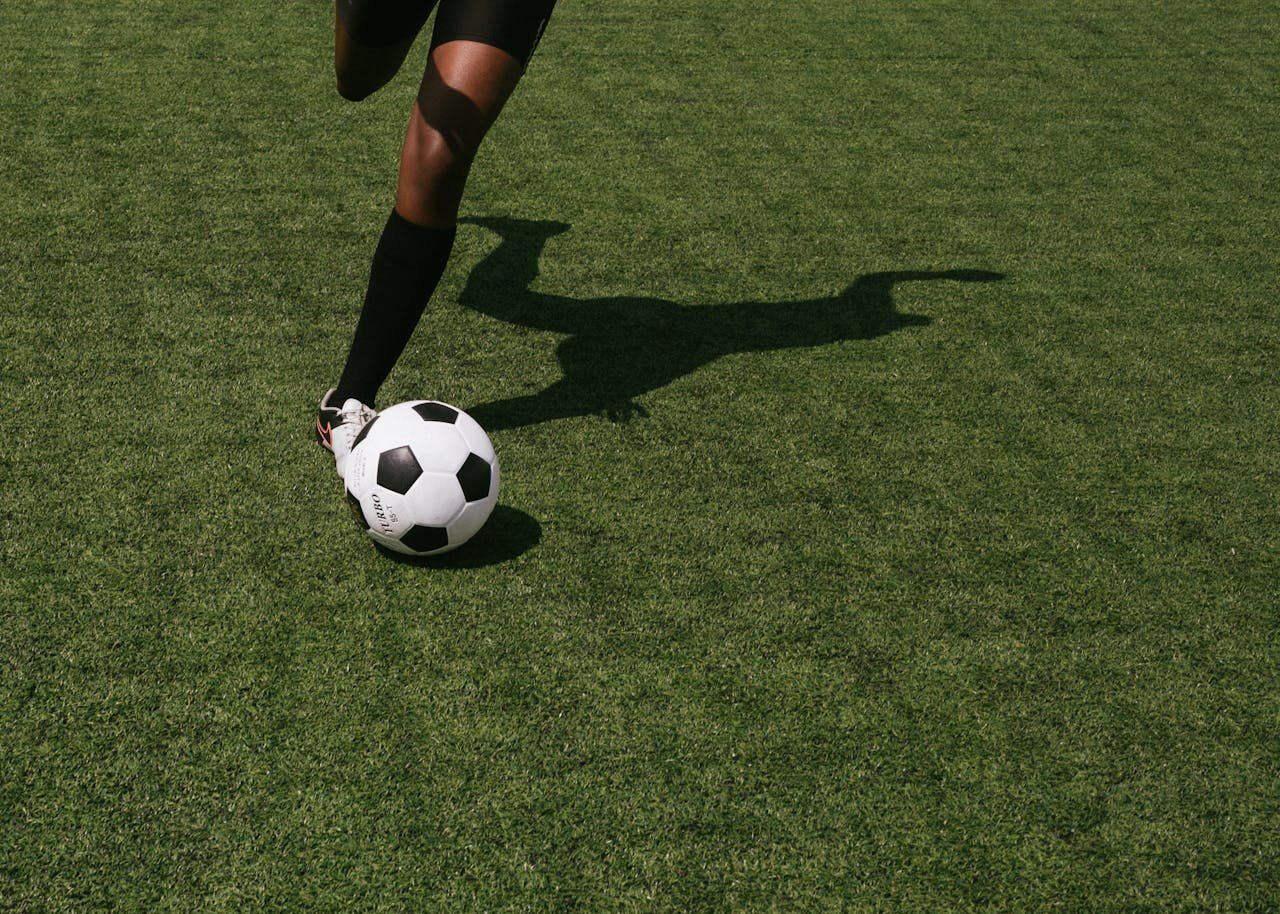If you’re just starting out in soccer or looking to improve your skills, mastering ball control is essential. You can have great speed, strong tackles, and powerful shots, but if you can’t control the ball, you’ll always be a step behind. The good news? Improving your ball control is entirely possible with the right drills. In this article, we’ll explore the best soccer drills for beginners that will help you develop better ball control fast.
Whether you’re training by yourself or with friends, these drills will help you improve your technique, boost your confidence on the ball, and make you a more effective player on the pitch.
Why Is Ball Control Important in Soccer?
Ball control in soccer refers to your ability to receive, manipulate, and pass the ball accurately. It’s one of the most fundamental skills you’ll use throughout the game. Whether you’re trying to trap a high pass, make a quick move around an opponent, or set up a perfect shot on goal, your ball control is key.
The best players are those who make controlling the ball look effortless. For beginners, though, it’s not as easy. But with consistent practice, you can develop this essential skill. And here’s the good news: You don’t need fancy equipment or a field full of teammates to improve your ball control. With the right drills and dedication, you’ll see fast results.
The Best Soccer Drills for Beginners
1. Juggling to Improve Touch and Balance
Juggling is one of the most effective drills to improve your ball control. It helps you develop a softer touch, better balance, and improved coordination.
To start, simply use your feet, thighs, and head to keep the ball in the air. Focus on keeping the ball under control and maintaining a consistent rhythm. If you’re a total beginner, try to get five juggles in a row. As you progress, aim for more and more.
2. Passing and Receiving with a Partner
One of the simplest yet most effective ways to improve your ball control is by practicing passing and receiving with a partner. This drill allows you to focus on both controlling the ball and making accurate passes.
To get started, stand a few meters apart from your partner. Pass the ball back and forth, focusing on receiving the ball with your feet and controlling it immediately. To improve your control, try to cushion the ball with the inside of your foot or thigh, rather than letting it bounce away.
3. Dribbling through Cones for Precision and Agility
Dribbling through cones is a drill that improves your ball control, precision, and agility. Setting up a series of cones in a line or zigzag pattern and dribbling the ball through them will train you to keep the ball close to your feet while maintaining control.
Start by setting up cones a few feet apart. Dribble the ball through the cones, trying to avoid hitting them while keeping the ball close. Focus on using both feet to maneuver the ball around each cone smoothly. This will help develop your touch, as well as your ability to adjust quickly to changes in direction.
4. Ball Control with a Wall
Using a wall for ball control drills is an easy way to practice on your own. This drill helps you improve your first touch, which is crucial for controlling passes during a match.
Find a wall where you can pass the ball against it. Stand about 5-10 yards from the wall and pass the ball against it with your dominant foot. As the ball rebounds, use the inside of your foot or thigh to control it and prepare for the next pass.
5. The Foundation: Basic Trapping
Trapping is the skill of stopping and controlling the ball once it’s passed to you. It’s a fundamental skill that every soccer player needs to master.
Start by having a partner pass the ball to you at a comfortable pace. Focus on using the inside or sole of your foot to stop the ball. The goal is to control the ball with minimal movement, bringing it to a complete stop as close to your body as possible.
6. Toe-Touch Dribbling for Quick Control
Toe-touch dribbling is a simple drill that helps beginners develop quick and precise touches on the ball. It improves your ability to keep the ball close while maintaining speed and control—essential when navigating through defenders or making a fast break.
Start by standing with your feet shoulder-width apart. Using the inside and outside of each foot, tap the ball back and forth between your feet as quickly as possible. Try to stay on your toes for better balance and control. Gradually increase your speed as you get more comfortable.
7. The “V” Shape Dribbling Drill
The “V” shape drill is perfect for improving your ability to change directions quickly and keep the ball close to your feet. It’s a great drill for refining control in tight spaces, and it also teaches you how to use both feet effectively during a dribbling move.
Set up a cone or marker at the center of an open space. Start dribbling the ball toward the cone, then use the inside or outside of your foot to turn sharply around it in a “V” shape. Change direction again and repeat the movement, making sure to keep the ball under tight control.
8. The “Stop-and-Go” Dribble Drill
This drill is designed to help you master acceleration and deceleration while keeping control of the ball. Soccer is all about quick bursts of speed and sudden changes in direction, and the “stop-and-go” dribble helps you work on both.
Set up a series of cones, spaced a few feet apart, in a straight line. Dribble the ball forward toward the cones at a moderate pace, then stop the ball abruptly using your foot. After the stop, quickly accelerate to the next cone, repeating the stop-and-go motion as you progress down the line.
9. Ball Control with Different Surfaces of Your Foot
Mastering ball control means knowing how to use different surfaces of your foot to maintain possession and make accurate passes. The inside, outside, and sole of your foot each serve a purpose in various situations, and practicing with all of them will make you a more adaptable player.
Practice stopping, passing, and dribbling using different parts of your foot. For instance, use the inside for precise passes, the outside for quick directional changes, and the sole for stopping or shifting the ball under pressure.
10. Close Control Dribbling in Tight Spaces
Close control is the ability to dribble the ball effectively in tight spaces and under pressure. This is a critical skill, especially when surrounded by defenders. You need to keep the ball close to your feet while making quick movements to evade opponents.
To practice close control, set up a small square or circle using cones. Dribble the ball inside this area, making tight turns and keeping the ball close at all times. Focus on quick, controlled touches, and avoid letting the ball get too far away.
When Should You Practice These Drills?
Consistency is key when it comes to improving your ball control. The more often you practice, the quicker you’ll see progress. Ideally, aim to practice ball control drills 3-4 times a week, depending on your schedule and fitness level.
If you’re new to soccer or ball control, it’s best to start slow and focus on one or two drills at a time. Gradually increase the intensity and variety of your practice sessions as your skill level improves.
Should You Practice Alone or with a Partner?
While practicing with a partner can be motivating and fun, practicing alone also has its advantages. Drills like wall passing, juggling, and cone dribbling can be done solo and are great for honing your touch and control.
That said, practicing with a partner—especially when passing or receiving the ball—helps simulate real match situations. Having someone to challenge you also allows you to practice under pressure, which is essential for game situations.
Improving Your Ball Control
Focus on Technique
The key to improving your ball control is to prioritize technique over speed. While it’s tempting to rush through drills, make sure to focus on accuracy and precision first. Once you’ve mastered the technique, you can gradually increase the pace.
Stay Calm Under Pressure
It’s easy to panic when you’re in a tight situation on the field, but the more you practice ball control under pressure, the calmer and more confident you’ll feel. Try practicing in high-pressure situations, like when you’re in a confined space or when there’s a defender right next to you.
Visualize the Ball’s Movement
Visualization is a powerful technique that top athletes use to improve their skills. Visualize the ball moving smoothly from one foot to the next, or imagine yourself receiving a pass and controlling it in perfect form. This mental exercise can improve your coordination and focus on the field.
Wrapping Up
Ball control is one of the most fundamental skills in soccer, and with consistent practice, it can be dramatically improved. The best soccer drills for beginners, such as toe-touch dribbling, passing against a wall, and the “V” shape drill, are excellent starting points for refining your technique and boosting your confidence on the field.
Remember, mastering ball control takes time. Focus on technique, work on your weak foot, and practice regularly. Whether you’re practicing alone or with a partner, every session is an opportunity to improve and elevate your game.
If you’re dedicated to improving your skills, don’t forget that consistency is key. Keep practicing, stay patient, and soon enough, you’ll notice the difference in your ball control during real match situations.









